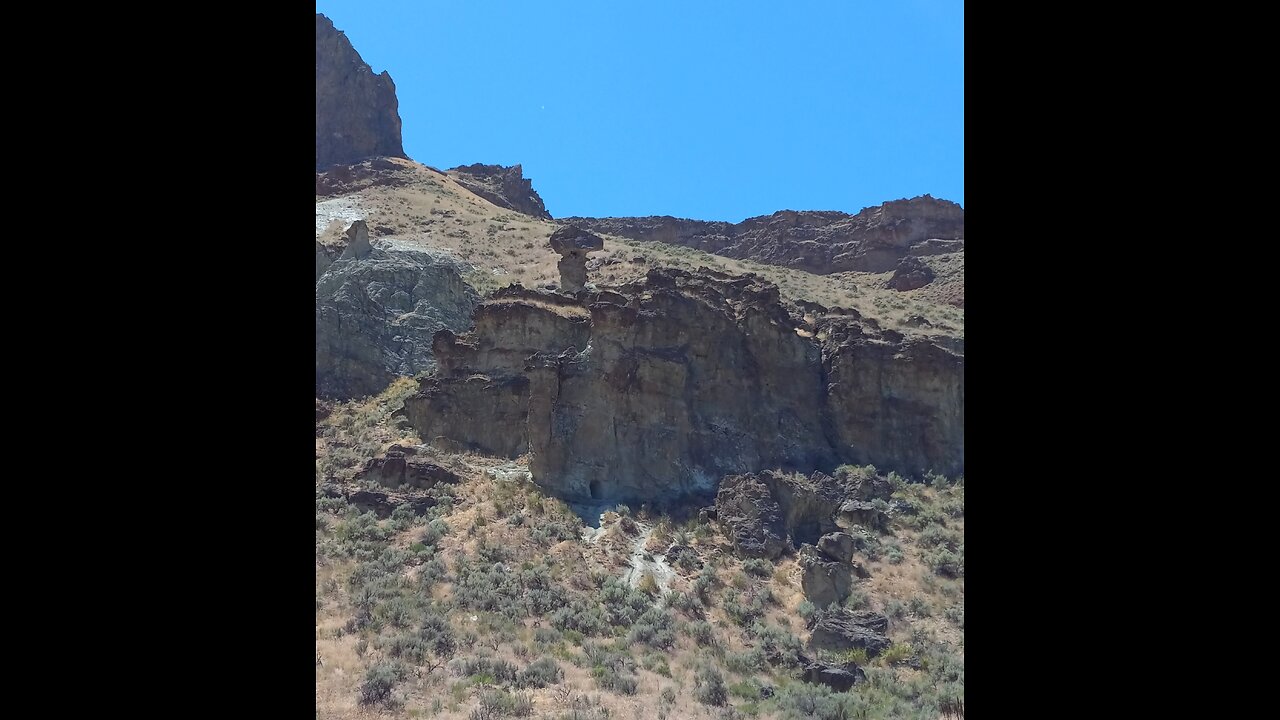Premium Only Content

Another cave!!!
A cave or cavern is a natural void under the Earth's surface. Caves often form by the weathering of rock and often extend deep underground. Exogene caves are smaller openings that extend a relatively short distance underground (such as rock shelters). Caves which extend further underground than the opening is wide are called endogene caves.
Speleology is the science of exploration and study of all aspects of caves and the cave environment. Visiting or exploring caves for recreation may be called caving, potholing, or spelunking.
Formation types
The formation and development of caves is known as speleogenesis; it can occur over the course of millions of years. Caves can range widely in size, and are formed by various geological processes. These may involve a combination of chemical processes, erosion by water, tectonic forces, microorganisms, pressure, and atmospheric influences. Isotopic dating techniques can be applied to cave sediments, to determine the timescale of the geological events which formed and shaped present-day caves.
It is estimated that a cave cannot be more than 3,000 metres (9,800 ft) vertically beneath the surface due to the pressure of overlying rocks. This does not, however, impose a maximum depth for a cave which is measured from its highest entrance to its lowest point, as the amount of rock above the lowest point is dependent on the topography of the landscape above it. For karst caves the maximum depth is determined on the basis of the lower limit of karst forming processes, coinciding with the base of the soluble carbonaterocks. Most caves are formed in limestone by dissolution.
Caves can be classified in various other ways as well, including a contrast between active and relict: active caves have water flowing through them; relict caves do not, though water may be retained in them. Types of active caves include inflow caves ("into which a stream sinks"), outflow caves ("from which a stream emerges"), and through caves ("traversed by a stream").
Speleothems in Hall of the Mountain King of Ogof Craig a Ffynnon, a solutional cave in South Wales.
Solutional cave
Solutional caves or karst caves are the most frequently occurring caves. Such caves form in rock that is soluble; most occur in limestone, but they can also form in other rocks including chalk, dolomite, marble, salt, and gypsum. Except for salt caves, solutional caves result when rock is dissolved by natural acid in groundwater that seeps through bedding planes, faults, joints, and comparable features. Over time cracks enlarge to become caves and cave systems.
The largest and most abundant solutional caves are located in limestone. Limestone dissolves under the action of rainwater and groundwater charged with H2CO3 (carbonic acid) and naturally occurring organic acids. The dissolution process produces a distinctive landform known as karst, characterized by sinkholes and underground drainage. Limestone caves are often adorned with calcium carbonate formations produced through slow precipitation. These include flowstones, stalactites, stalagmites, helictites, soda straws and columns. These secondary mineral deposits in caves are called speleothems.
The portions of a solutional cave that are below the water table or the local level of the groundwater will be flooded.
-
 0:46
0:46
RyanzRocks
2 days agoWillamette National Forest!
261 -
 59:14
59:14
VINCE
3 hours agoAmerica's Liberation Has Begun | Episode 14 - 04/03/25
183K98 -
 2:52:38
2:52:38
Matt Kohrs
13 hours agoTHE STOCK MARKET IS CRASHING || The MK Show
32.7K9 -
 LIVE
LIVE
The Big Mig™
2 hours agoBiden Under Investigation
5,876 watching -
 1:00:09
1:00:09
BonginoReport
5 hours ago“Liberation Day”: Trump Champions Economic Nationalism - BR Early Edition w/ Evita Duffy (Ep.174)
133K70 -
 2:59:19
2:59:19
Wendy Bell Radio
7 hours agoThe One Thing Democrats Will Never Stand Up For Is America
61.6K44 -
 1:17:06
1:17:06
Dear America
13 hours agoRINOS Vote WITH Dems Against Trump Tariffs + Girl Refuses To Compete With Biological Male?!
52.7K22 -
 1:04:16
1:04:16
2 MIKES LIVE
2 hours agoTHE MIKE SCHWARTZ SHOW with DR. MICHAEL J SCHWARTZ 04-03-2025
21.2K1 -
 1:29:02
1:29:02
Game On!
17 hours ago $4.39 earnedAntonio Brown was RIGHT! Rodgers signing with Steelers is IMMINENT!
55.2K7 -
 10:18
10:18
Friday Beers
16 hours agoWe Became the Highest Paid Street Performers in Los Angeles
71.8K13